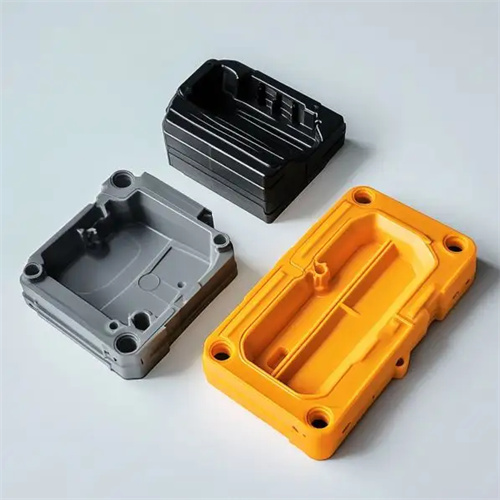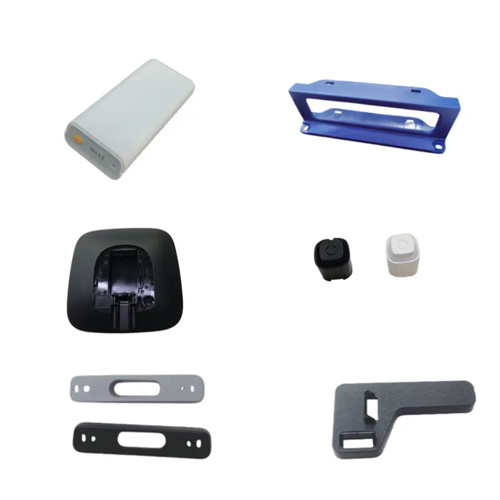Venting in areas with thin plastic walls but large areas
Thin-walled, large areas of plastic parts (such as mobile phone casings and automotive dashboards) present challenging venting challenges during injection molding. These areas experience long melt flow distances and rapid cooling rates, making poor venting highly susceptible to defects such as bubbles, burning, and material shortages. Rapid, high-pressure melt filling thin, large surfaces compresses air within the cavity into corners or ends. Due to the thin walls, air cannot penetrate the melt and escape. The accumulated high pressure causes a sudden rise in localized temperatures, triggering melt decomposition. For example, when an electronics factory produced 0.8mm-thick ABS mobile phone casings, insufficient venting across these large areas resulted in bubbles with diameters of 0.5-1mm appearing on the surface. This resulted in a defect rate of up to 25%, severely impacting product quality.

Traditional venting methods have obvious limitations in areas with thin walls and large surfaces, and require targeted optimization. Conventional parting surface venting grooves are difficult to vent evenly over large areas, and the parting surface gaps of thin-walled plastic parts are prone to flash due to high pressure, limiting the depth of the venting grooves (usually needing to be less than 0.02mm). Although ejector pin venting can assist in exhaust, the distribution of ejector pins in large areas is limited, resulting in insufficient exhaust efficiency. When a power plant produced 2mm thick PP air conditioning panels, it relied solely on parting surface venting, resulting in continuous burn marks on the edges of the panels. Inspection revealed that this was due to melt decomposition caused by air being compressed to above 300°C. By adding 20 1mm diameter exhaust pins to the edge of the panel, air can be discharged through the pinholes, completely eliminating the burn defects.

The layout and structural design of the venting grooves are key to venting in areas with thin walls and large surfaces. Venting grooves should be set at the ends and corners of the cavity along the direction of melt flow, using a “net” or “radial” layout to ensure that air can be exhausted from multiple directions. The depth of the venting groove needs to be adjusted according to the material properties. For materials with higher viscosities such as ABS and PC, the depth can be set to 0.03-0.05mm; for low-viscosity materials such as PE and PP, the depth should be controlled at 0.01-0.02mm to prevent flash. When a mold factory designed an exhaust system for 1mm-thick PMMA lenses, it set a 5mm wide and 0.03mm deep annular venting groove along the edge of the lens, and connected an 8mm diameter exhaust hole at the end of the groove, which increased the exhaust efficiency by 3 times and reduced the lens bubble defect rate from 18% to 2%.

The use of assisted exhaust technology can effectively solve the exhaust problem in thin-walled and large-surface areas. Vacuum exhaust is a highly efficient method that connects a vacuum system to the end of the cavity to extract the air in the cavity before injection, thereby reducing the air resistance during melt filling. When a certain auto parts factory produced 1.2mm thick PC car lampshades, it introduced a vacuum exhaust device to reduce the vacuum degree in the cavity to -0.08MPa, shortening the melt filling time by 15%, and eliminating any bubbles on the surface of the lampshade. In addition, gas-assisted exhaust technology “pushes” the air to the exhaust groove by injecting inert gas while the melt is filling. It is particularly suitable for thin-walled and large-surface plastic parts with complex shapes. After a lighting factory adopted nitrogen-assisted exhaust, the exhaust defect rate of the lampshade dropped by 70%.

Optimizing process parameters can improve the performance of the exhaust system. Properly increasing the injection speed can reduce cooling of the melt during filling and prevent blockage of the exhaust channel due to increased viscosity. However, excessively fast speeds can exacerbate air entrapment, and the optimal value must be determined through experimentation (usually 10-20% higher than conventional speeds). Increasing the mold temperature can reduce melt viscosity, enhance its fluidity, and allow air to be more easily expelled into the exhaust grooves. When a toy factory produced 1.5mm thick PP toy shells, it increased the mold temperature from 50°C to 65°C and the injection speed from 40mm/s to 50mm/s. Combined with optimized exhaust grooves, the shell’s material shortage defect rate was reduced from 12% to 1%. Furthermore, appropriately reducing the holding pressure can reduce the compression of the melt on air and avoid burning caused by localized high temperatures.

Maintenance of the exhaust system for thin-walled, large-surface parts is equally important. During production, plastic debris and volatiles can easily clog the exhaust slots, requiring regular cleaning (recommended every 500 molds). Use a wire brush or specialized cleaning tools to remove any residue. For vacuum exhaust systems, regularly check the operating status of the vacuum pump and the tightness of the piping to ensure the vacuum level meets standards. By establishing an exhaust system maintenance log, one electronics assembly plant has consistently maintained a defective exhaust rate of less than 2% for thin-walled, large-surface plastic parts, significantly improving production efficiency and product qualification rates.
